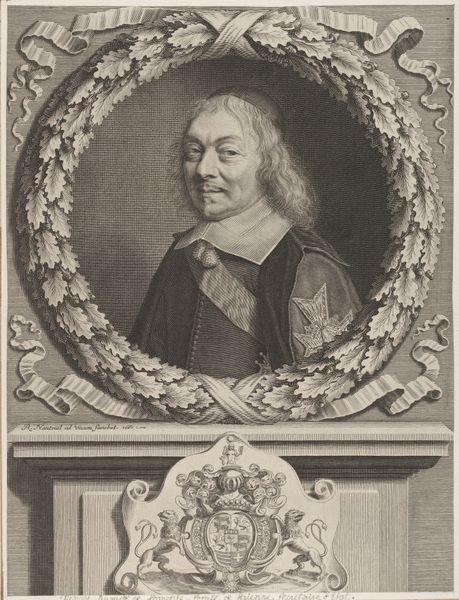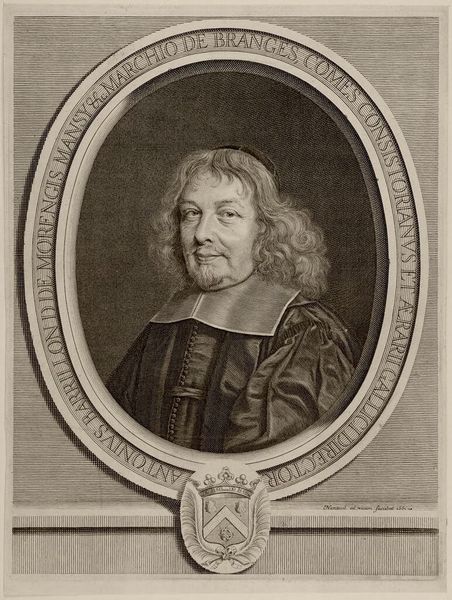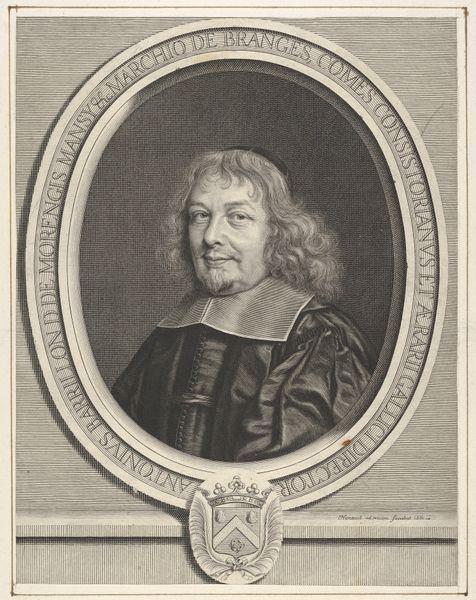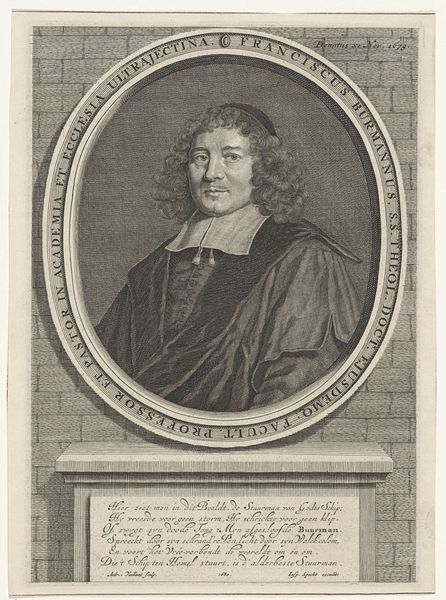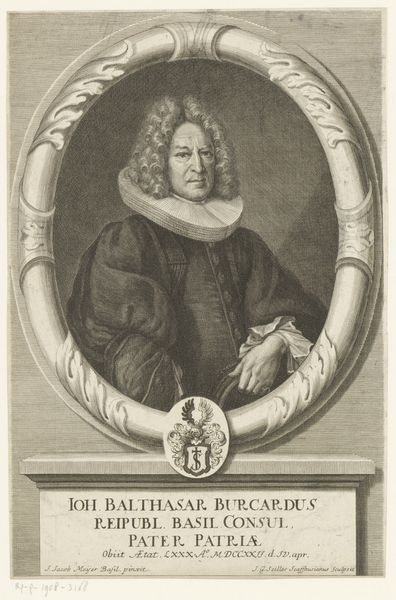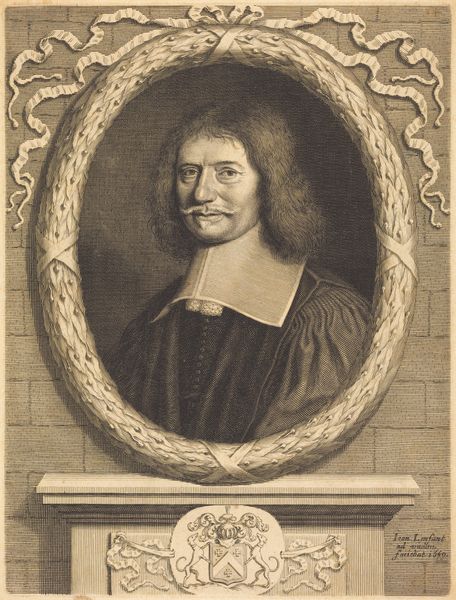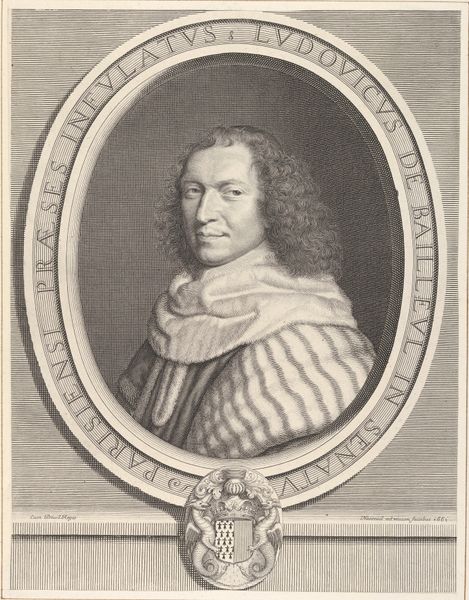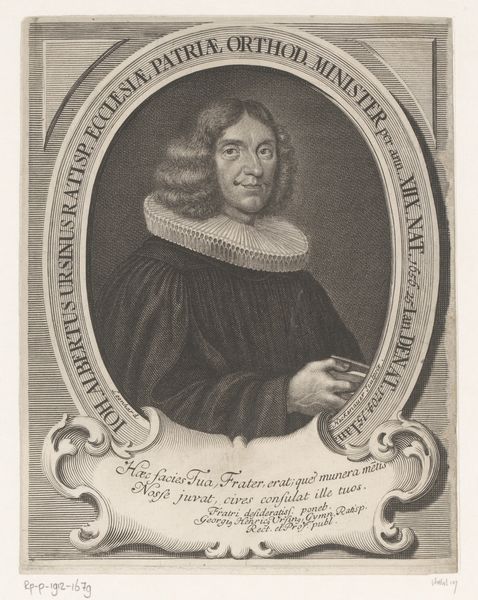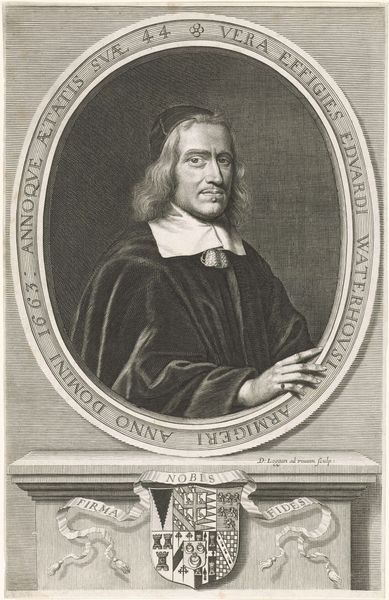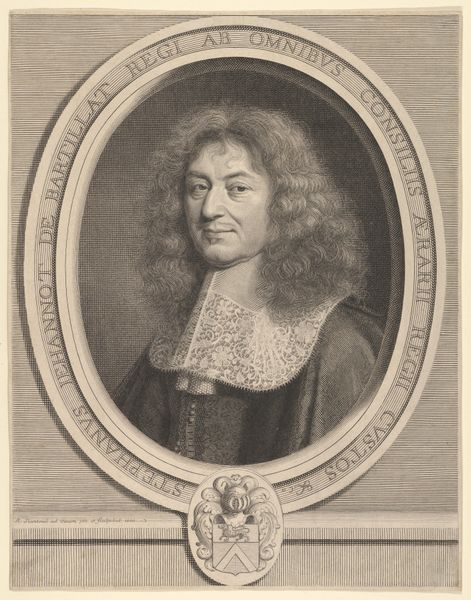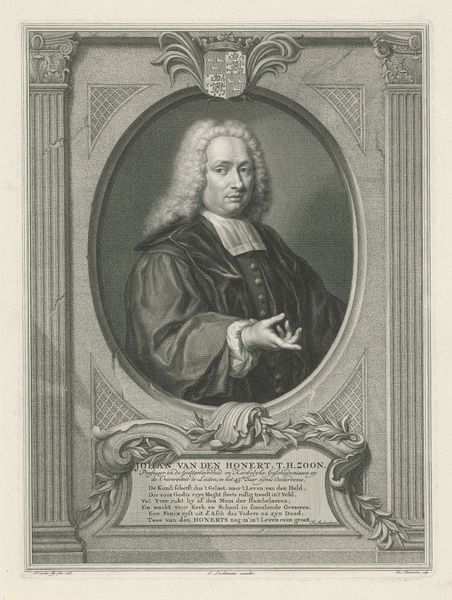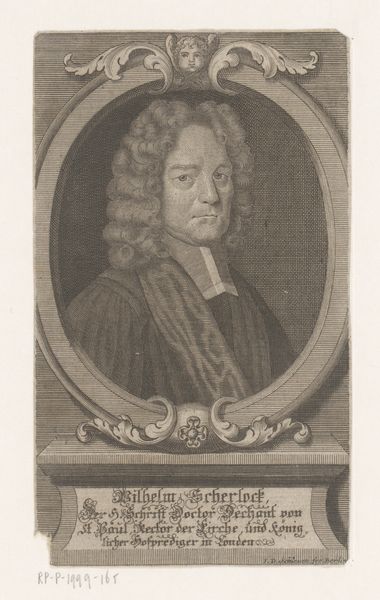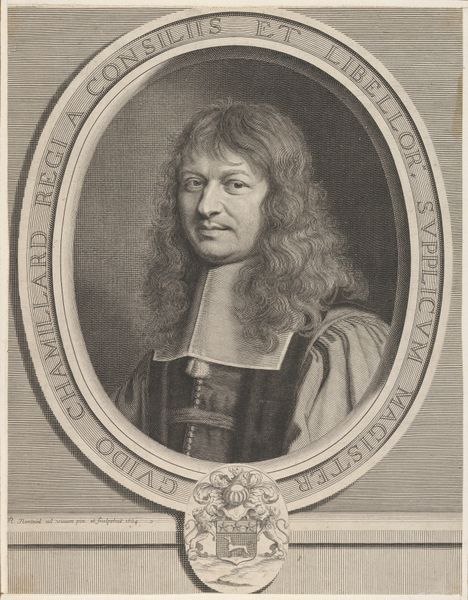
engraving
#
portrait
#
baroque
#
old engraving style
#
figuration
#
historical photography
#
line
#
history-painting
#
engraving
Dimensions: height 247 mm, width 200 mm
Copyright: Rijks Museum: Open Domain
Editor: This is David Loggan's "Portrait of William Holder," an engraving dating from between 1683 and 1692. I find the formality striking. The ornate frame almost overwhelms the sitter. How do you interpret this work within its historical context? Curator: The portrait sits within a larger history of representing power and social standing. William Holder, a prominent clergyman and fellow of the Royal Society, is presented here through the lens of his institutional affiliations and social status, reflected in the Latin inscription. It’s not simply about individual likeness but about situating Holder within the power structures of the late 17th century. Editor: So, you're saying it's less about Holder the man and more about Holder the representative of certain institutions? Curator: Precisely. The choice of engraving as a medium is itself telling; engravings allowed for wider dissemination and distribution of images, reinforcing and perpetuating existing hierarchies. The inclusion of the coat-of-arms and decorative elements is a calculated statement about lineage and belonging. What questions does the imagery provoke for you, especially thinking about who gets represented and why? Editor: It makes me wonder about the agency of the sitter. Was Holder complicit in this representation, or was it imposed upon him? And how did engravings like this contribute to shaping public perceptions of individuals and institutions during that time? Curator: Those are exactly the critical questions we should be asking. Thinking about power, visibility, and representation is key. We can consider how portraiture often functions to uphold specific narratives that exclude marginalized voices, reminding us of the selective nature of historical records. Editor: It's fascinating to consider the portrait not just as an image of an individual, but as a reflection of broader social and political forces at play. Curator: Absolutely, this understanding allows us to challenge conventional readings of historical figures and examine the ideologies embedded within seemingly straightforward portraits.
Comments
No comments
Be the first to comment and join the conversation on the ultimate creative platform.
